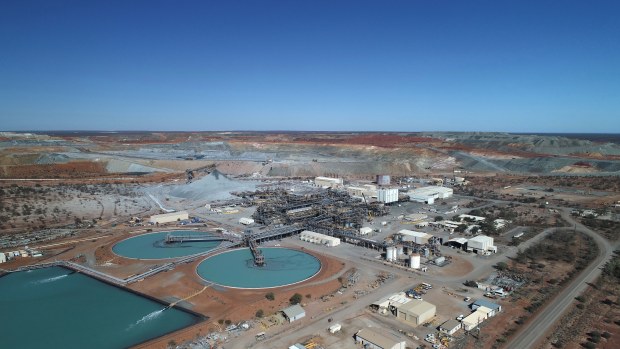...ironically if it wasn't for EVs, Nickel West would probably still be operating, because Indonesia would probably not felt incentivised to explore and produce nickel.
...it shows that miners were completely blindsided by the prospect of huge demand for critical minerals from the EV boom
...the reality is that EV battery chemistry is evolving, and demand for nickel from EV would gradually drop because NCM batteries would progressively be replaced by LFP and solid state batteries, range may be a consideration but battery tech keeps progressing.
....now how you can you invest hundreds of millions into a mine hinging on the thinking that that critical mineral would continue to stay relevant in EV batteries into the years ahead?
....for the sheer fact is that Lithium and Nickel is NOT Iron Ore.
BHP’s nickel blunder a timely reminder for Australia
BHP wanted to profit from the EV boom by selling nickel to battery makers. It hasn’t worked, yet.
Jul 11, 2024 – 7.01pm
The global nickel market is a battle of two things: electric vehicles and Indonesian miners.
In 2024, the Indonesians are winning. The miners are supplying nickel into the market quicker than Tesla and other electric vehicle groups are making cars.
So while there’s plenty of hype about EVs, the nickel price doesn’t show it. The market is in glut and old-world nickel miners like BHP, also facing cost pressures, cannot make a buck.
The way BHP sees it, that supply/demand equation will remain in the Indonesians’ favour for at least the next few years.
That’s why BHP put its giant West Australian nickel business, which includes Nickel West and the West Musgrave project, on ice. It will spend $450 million a year in case the market ends up better than expected and review the “temporary suspension” by February 2027.
In doing so, it blasts a giant hole in Australia’s nickel industry, right as it was supposed to be growing quickly and getting rich from the electrification boom.
BHP owns mines, a smelter in Kalgoorlie and a refinery at Kwinana, south of Perth, making it the industry’s beating heart and most important player. Smaller players have been packing up all year.
It is a good reminder that Australian miners, even the Big Australian, are price takers not price makers. We have a special place in the iron ore and coal markets because of the scale of the projects and infrastructure required to get mining, but can be made to look uncompetitive pretty quickly by cheaper countries, even in established commodities like nickel.
The question is whether nickel makes it back into BHP’s production profile and if so, when?
BHP reckons its forecasting is normally pretty good on the demand side, but clearly it misread the situation in Indonesia and how the lower-grade nickel would be accepted by market-makers and buyers. It thinks the demand/supply problem (and nickel price) will persist until towards the end of this decade.
At best, it could be late in the decade. At worst, BHP will have a bigger decision to make in a few years. It opted to keep Nickel West as part of its future-facing commodities strategy five years ago, which has so far been a costly decision.
Like we said, BHP will spend $450 million a year for zero revenue to keep it warm and had already spent $US3 billion ($4.4 billion) to sustain its nickel business and reorient it towards the EV market in the past five financial years. That “investment” was written off in February.
Having placed nickel on review, BHP had two options: keep mining, smelting and refining nickel and wearing those losses, or suspend it altogether.
Nickel West’s Mount Keith, in Western Australia.
Investors will not be surprised that BHP went for the latter; it was the rational financial decision, six months in the making and delivered as it prepares to announce an expected $US55.5 billion revenue and $28.9 billion EBITDA for the year to June 30, according to S&P Global Markets data.
It retains ambitions to be an integrated mines-to-metals business and with a growth profile at West Musgrave – just not now.
The one alternative that was doing the rounds with analysts was that BHP may put the smelter and refinery on care and maintenance and sell concentrate at a lower payable amount, to stem losses, as suggested by Macquarie. It wasn’t to be.
BHP president for Australia, Geraldine Slattery, delivered the news on Thursday. She guaranteed the jobs of 1600 frontline nickel workers – representing about 70 per cent of the overall workforce – who will be offered jobs in other parts of the group.
It is not the first time Nickel West’s future has been under a cloud. BHP has reviewed it a couple of times in the past decade, including when it spun off South32, but opted to retain it as part of the expected batteries boom.
The latest bust cycle – and there are always booms and busts in nickel – has seen Nickel West written down to just about zero by BHP and its institutional investors. Morgan Stanley analysts even have its value pegged at negative $2.45 billion, or 85¢ a BHP share.
Unfortunately for all those Nickel West workers, the market will move on quickly. While iron ore is at $US100 a tonne or more, and while BHP head office has big eyes for copper, nickel will not move the dial.
And if it is not moving the dial, you have to ask how long the miner will keep kicking the can down the road.
- Forums
- ASX - General
- EV/Lithium
EV/Lithium, page-825
Featured News
Featured News
The Watchlist
PAR
PARADIGM BIOPHARMACEUTICALS LIMITED..
Paul Rennie, MD & Founder
Paul Rennie
MD & Founder
SPONSORED BY The Market Online










